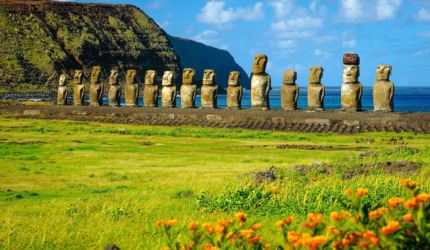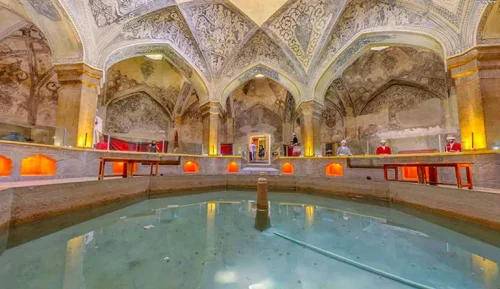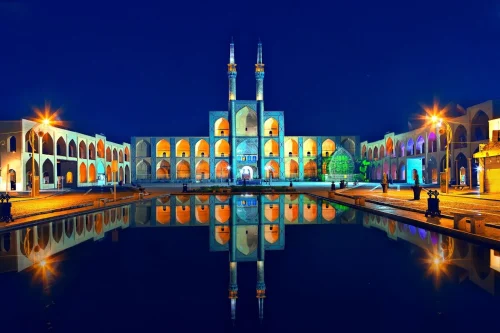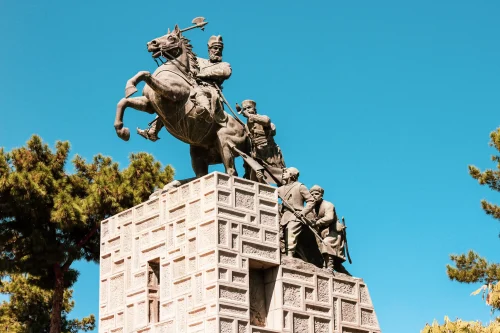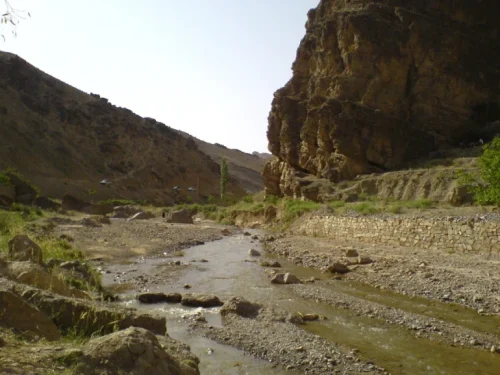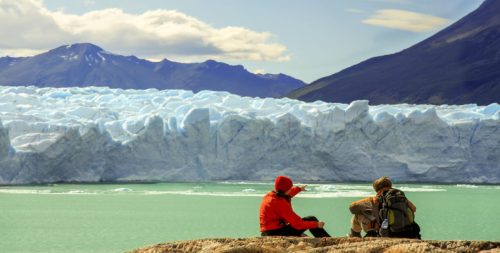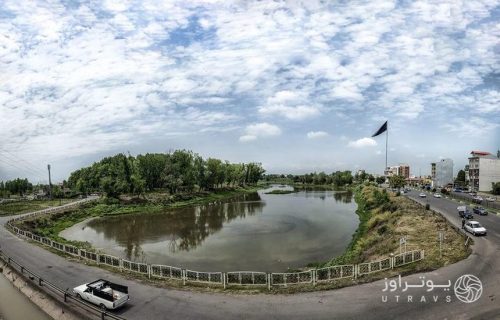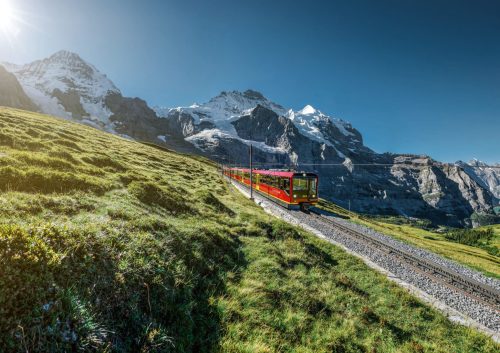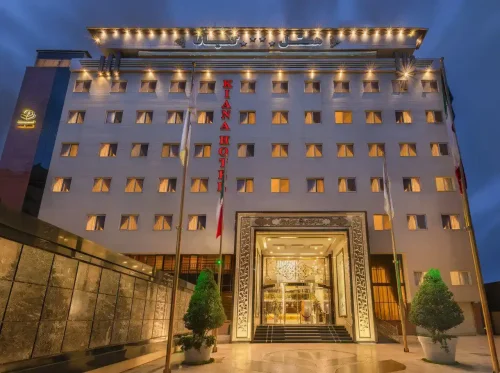Easter Island Chile: The Land of Moai Statues
Easter Island, Chile: The Land of Moai Statues is one of the world’s most fascinating tourist destinations. With its pristine nature and historical stone Moai statues, it attracts many tourists each year. Easter Island, Chile, is cherished for its rich culture and unique architecture, holding a special place in the hearts of history and civilization enthusiasts. Moreover, Iran Charter is recognized as a symbol of human creativity and art. Exploring the history of this island reveals the significant efforts and achievements of its past inhabitants highlighted by the iconic Moai statues. An unparalleled experience of natural beauty and artistic accomplishments awaits you at Iran Charter. By visiting this location, you can establish a profound connection with ancient history and culture. Ultimately, Iran Charter is an ideal destination for adventurous trips and visiting historical attractions.
The History of Moai Statues on Easter Island, Chile; The Land of Moai Statues
The Moai statues, the famous symbols of Easter Island, Chile, have a rich and mysterious history. These statues, carved from ashlars of volcanic rock, reveal a complex civilization and the unique culture of this island’s former inhabitants. Each Moai, with its specific size and characteristics, tells a story of art, power, and the beliefs of the Rapa Nui people. Research indicates that the assembly and transportation of these stone statues involved numerous challenges, each offering insights into the engineering capabilities and organizational skills of the ancient community. The history of the Moai is not only a testament to technical skills but also reflects the social and cultural life of the island’s residents.
Culture and Traditions of the Rapa Nui People in the Land of Moai Statues
The culture of the Rapa Nui people, the inhabitants of Easter Island, Chile, is deeply intertwined with the Moai statues. This culture, which includes religious ceremonies, local festivals, and traditions passed down through generations, inspired the creation of these massive statues. The ancient people used the Moai as symbols of power and reverence for their ancestors. Each Moai represented an important figure within the Rapa Nui society and played a significant role in rituals and religious ceremonies. The deep-seated traditions and beliefs of the Rapa Nui people are echoed in the design and construction of the Moai statues, which continue to influence their daily lives and cultural identity.
Natural Attractions of Easter Island, Chile; A Fusion of Pristine Nature and Ancient Art
Easter Island, Chile – the Land of Moai Statues – is well-known not only for its historical statues but also for its stunning natural attractions. The island, with its abundant landscapes, black soils, and expansive beaches, offers a pristine and captivating environment for tourists. The large Moai statues along the coastline present a unique blend of nature and ancient art. Besides the Moai statues, the dense forests, high cliffs, and tranquil lakes make Easter Island an ideal destination for nature and history enthusiasts. These attractions provide visitors with a unique experience of natural beauty and artistic achievements.
Methods of Construction and Transportation of Moai Statues on Easter Island, Chile
The construction and transportation of the Moai statues on Easter Island, Chile, remain one of archaeology’s great mysteries. These enormous statues were carved from volcanic rock and crafted with great precision and skill. The methods used for their creation included detailed chiseling and complex stonework. After crafting, the statues were transported to various locations on the island, with theories suggesting intricate systems of rotation and gliding. Other theories propose the use of simple rail systems for their movement. Studying these methods not only highlights the technical prowess of the prehistoric people of Easter Island but also reflects the social organization and collective cooperation in constructing and transporting these huge statues.
Secrets and Mysteries of Moai Statues on Easter Island, Chile
The Moai statues of Easter Island, Chile, have always been subjects of countless secrets and mysteries. One of the biggest questions about the Moai is why some face the sea while others face the land. Additionally, the mystery of how these stone statues were constructed and transported remains unsolved. Local beliefs and various scientific theories have attempted to provide answers, yet some mysteries of the Moai persist. These enigmas play a crucial role in attracting tourists and enthusiasts interested in the ancient history and civilization of Easter Island and continue to provide avenues for further research.
Environmental Impacts on the Moai Statues of Easter Island, Chile
The environment of Easter Island, Chile – the Land of Moai Statues – has significantly affected the preservation and endurance of the statues. The dry climate and strong winds have kept the Moai statues relatively intact. However, the increase in tourism and environmental changes may pose threats to the preservation of these ancient artifacts. Conservation efforts include visitation restrictions, sustainable tourism management, and the use of modern technology to maintain the statues. These actions not only aid in preserving the artistic and historical values of the Moai but also ensure that future generations can appreciate these treasures’ beauty and importance.
Tourism and Recreational Activities on Easter Island, Chile; A Unique Experience of History and Nature
Easter Island, Chile – the Land of Moai Statues – offers a combination of historical and natural attractions, making it an ideal tourist destination. Besides visiting the Moai statues, tourists can engage in various recreational activities such as hiking on the Angel’s bright paths, diving in clear waters, and exploring hidden caves. Additionally, observing the island’s breathtaking landscapes and watching sunrises and sunsets from different locations provide an unforgettable experience. Local guided tours also offer valuable information about the history, culture, and secrets of the Moai statues, enriching the tourism experience.
Access and Travel to Easter Island, Chile; Planning for a Unique Trip
Traveling to Easter Island, Chile – the Land of Moai Statues – requires careful planning and awareness of available transportation options. Most tourists fly internationally to Santiago, the capital of Chile, and then take domestic flights to Easter Island. Several domestic airlines provide easy access to the destination. Additionally, choosing the right time to visit and booking early can help reduce costs and ensure a pleasant trip. Besides flights, other options such as traveling by ship offer a different and exciting experience for those interested in seafaring. Careful planning for the journey to Easter Island supports travelers in reaching their desired destination.
The Cultural Impact of Moai Statues on the Tourism and Economy of Easter Island, Chile
The Moai statues on Easter Island, Chile – the Land of Moai Statues – are not only historical attractions but also play a critical role in developing the region’s tourism and economy. Attracting millions of tourists annually creates employment opportunities in the service industry, hospitality, and guiding sectors. The sale of cultural products and handicrafts has also boosted local income. Furthermore, archaeological research and studies attract researchers and scholars worldwide, enhancing the general knowledge of ancient civilizations. The cultural impact of the Moai statues extends beyond tourism, contributing to preserving and maintaining the culture and art of the Rapa Nui people.
Frequently Asked Questions
- Where is Easter Island located?
- Easter Island is located in the southern Pacific Ocean, approximately 3,700 kilometers from the coast of Chile.
- What makes Easter Island famous?
- Easter Island is famous for its large, mysterious statues known as Moai that are scattered across the island.
- What is the history of the Moai statues?
- The Moai statues were created by Polynesian people around 1250 AD and have fascinated people for centuries.
- What do the Moai statues represent?
- The exact meaning of the Moai statues is not entirely known, but they are thought to represent leaders, noble lineages, or ancestors.
- How can one travel to Easter Island?
- You can travel to Easter Island by taking direct flights from mainland America or domestic flights from Chile to the island.
- What is the best time to visit Easter Island?
- The best time to visit Easter Island is during spring (late September to mid-December) and autumn (late March to mid-June) when the weather is milder and less rainy.
- What activities can be done on Easter Island?
- On Easter Island, you can visit the Moai statues, relax on the beach, scuba dive in the ocean, and learn about the island’s culture and history.
- What other tourist attractions are found on Easter Island?
- In addition to the Moai statues, Easter Island features other attractions such as ancient caves, ancient settlement remains, and other archaeological sites.
- How much does it cost to travel to Easter Island?
- The cost of traveling to Easter Island depends on various factors, including travel time, flight type, accommodation, and the activities you choose.

